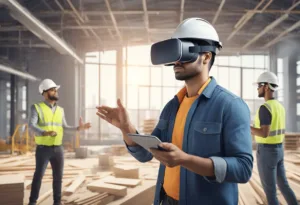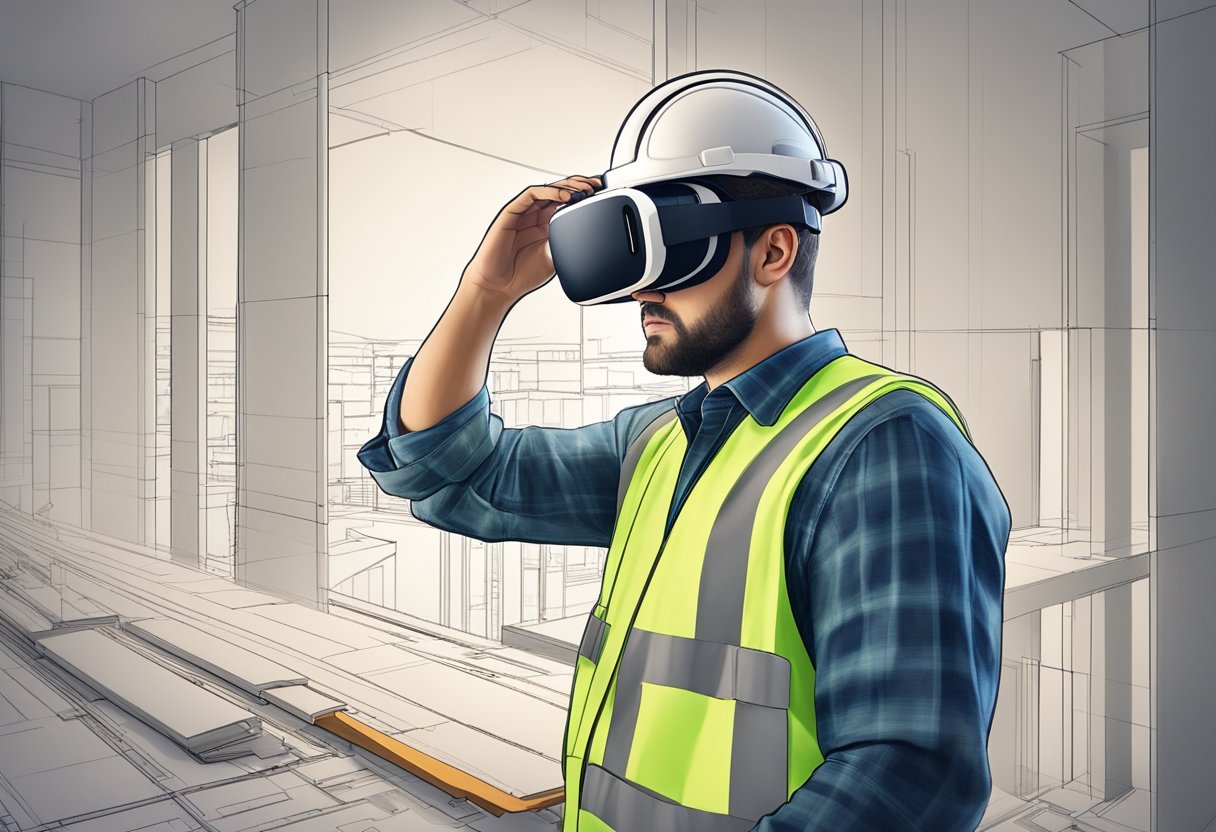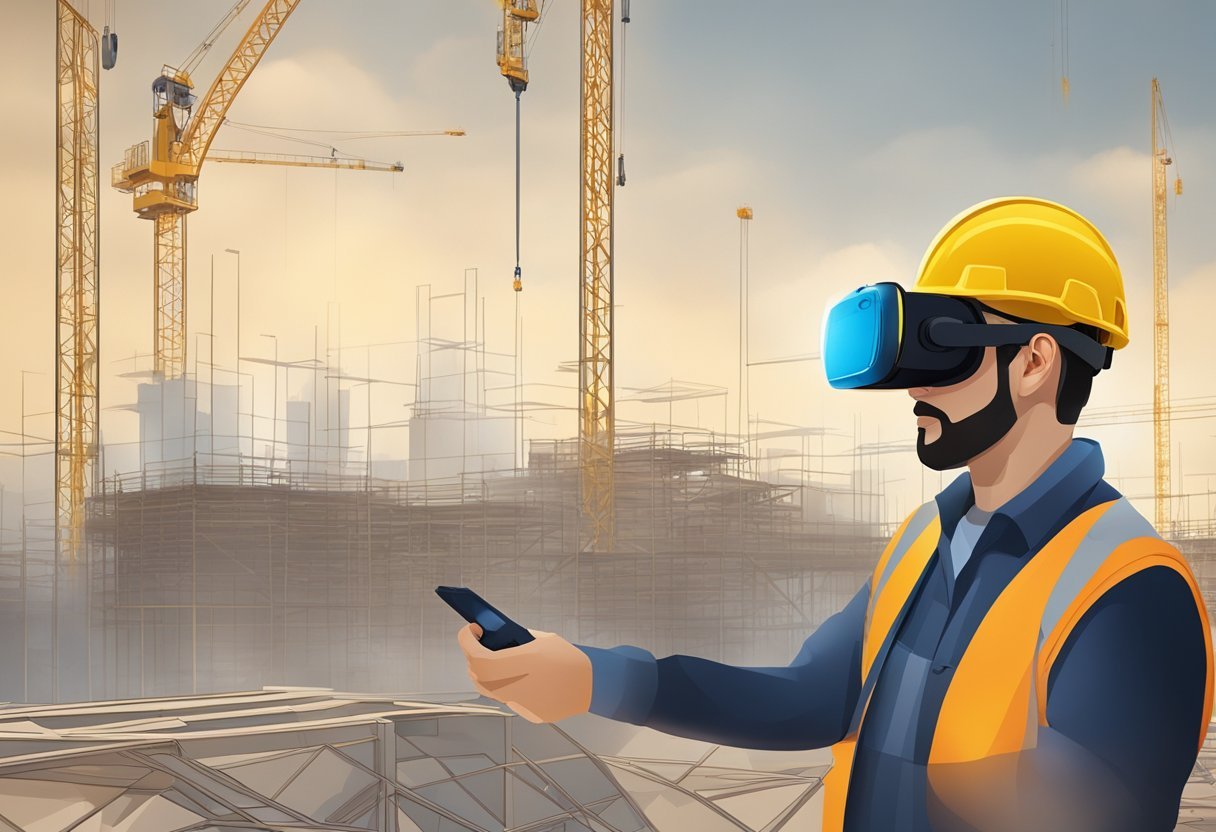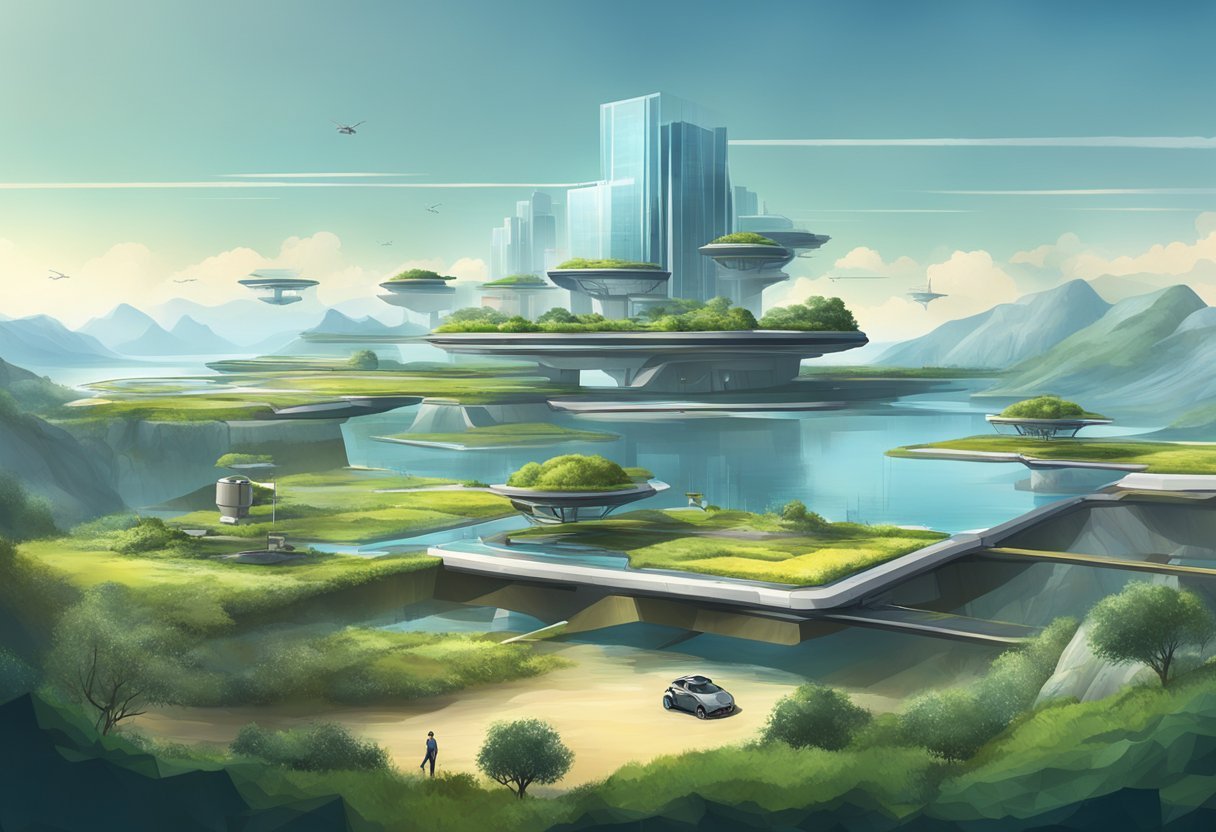Virtual reality (VR) has been making waves in the construction industry, revolutionizing the way construction projects are planned, designed, and executed. With the help of VR technology, construction companies can now create immersive and interactive learning experiences for their employees, allowing them to gain valuable knowledge and skills in a safe and controlled environment. VR can improve communication and collaboration among project stakeholders, leading to better project outcomes. In this blog post, I will share with you the benefits and use cases for virtual reality in construction industry and how VR can improve your project.
The evolution of VR in the construction industry has come a long way, and its applications are vast. From safety training to project design and pitching, VR technology has opened up new avenues for construction companies to improve their processes and workflows. Integrating VR in construction can bring many benefits, including better visualization and planning, improved safety training, enhanced collaboration and communication, cost savings, and waste reduction.
The role of virtual reality in construction industry
Virtual reality (VR) technology has emerged as an innovative and digital tool for the construction industry. It has transformed the way construction projects are envisioned, planned, and executed. VR has enabled architects, engineers, and contractors to visualize and simulate the construction process in a virtual environment. This technology has reduced the chances of errors and rework, saving time and cost.
VR technology has enabled construction professionals to create 3D models of buildings and infrastructure projects, which can be viewed from different angles and perspectives. This technology has allowed construction professionals to detect design issues and conflicts before construction begins, saving time and money. VR technology has also been used to train workers on construction sites, improving safety and reducing accidents.
Virtual reality in construction case study
One of the most significant applications of VR technology in the construction industry is the construction of the Burj Khalifa in Dubai. The Burj Khalifa is the tallest building in the world, standing at 828 meters (2,716 feet). VR technology was used to visualize the construction process, enabling architects, engineers, and contractors to simulate the construction process and identify potential issues.
VR technology was also used to train workers on the construction site, improving safety and reducing accidents. The use of VR technology in the construction of the Burj Khalifa saved time and cost and ensured that the building was completed on time.
Future Outlook
The future of VR technology in the construction industry is promising. VR technology is likely to become more sophisticated and advanced, enabling construction professionals to create more realistic and detailed virtual environments. This technology is likely to become more accessible, enabling more construction professionals to use it in their work.
In the future, VR technology is likely to be used for more complex construction projects, such as bridges and tunnels. VR technology is also likely to be used to improve collaboration between construction professionals, enabling them to work together more effectively.
VR technology has emerged as a valuable tool for the construction industry. It has transformed the way construction projects are envisioned, planned, and executed, saving time and cost and improving safety. The future of VR technology in the construction industry is promising, and it is likely to become more sophisticated and advanced, enabling construction professionals to create more realistic and detailed virtual environments.
Virtual Reality in Construction Industry: Use Cases

- Design Visualization and Review
- Client Engagement and Project Approval
- Safety Training and Risk Assessment
- Coordination and Clash Detection
- Virtual Walkthroughs and Inspections
- Pre-construction Planning
- Stakeholder Communication and Collaboration
- Marketing and Pre-sales
- Worker Training and Skill Development
- Accessibility Analysis and Design
Design Visualization and Review
Virtual reality (VR) offers a comprehensive platform for design visualization and review in the construction industry, allowing architects, engineers, and clients to immerse themselves within a virtual representation of the project. This technology facilitates a better understanding of the design and spatial relationships, which can be difficult to grasp with traditional 2D drawings. VR provides a realistic sense of scale and context, which is invaluable for identifying potential design issues before construction begins.
The price of implementing VR for design visualization can vary, with more sophisticated systems commanding a higher price. However, the investment can often be justified by the savings made from reducing design errors and the need for changes during construction. Durability is generally not a concern with VR equipment, as it is typically used in a controlled office environment.
Client Engagement and Project Approval
VR technology enhances client engagement and aids in the project approval process by providing an immersive experience that goes beyond traditional renderings or models. Clients can virtually tour the proposed construction, understanding the design intent and materials in a way that is much more tangible.
This can lead to faster approvals and increased client satisfaction. The cost of VR equipment for client engagement purposes must be balanced against the potential for accelerated project sign-off and the competitive advantage it provides. The durability of the VR equipment used in these settings is less of an issue compared to on-site technologies, as it is generally used in a more controlled and less demanding environment.
Safety Training and Risk Assessment
Safety training through VR allows construction workers to experience hazardous job site conditions in a controlled, virtual environment. This hands-on approach to risk assessment and safety training is highly effective in teaching proper safety protocols and hazard recognition without putting workers at risk. The cost of VR safety training programs can be offset by the reduction in accidents and insurance costs. VR headsets and controllers used in these training programs are built to be durable, though they are typically used indoors and not subject to the harsh conditions of actual construction sites.
Coordination and Clash Detection
VR is an invaluable tool for project coordination and clash detection, enabling construction teams to identify and resolve conflicts between different building systems before construction begins. By using VR to explore a 3D model of the project, teams can detect and address issues with mechanical, electrical, and plumbing systems that may not be evident in 2D plans.
The investment in VR technology for coordination purposes can lead to significant cost savings by preventing costly changes and delays during construction. The durability of the VR equipment is not a primary concern in this use case, as it is typically used in a controlled environment.
Virtual Walkthroughs and Inspections
Virtual walkthroughs and inspections allow construction professionals and clients to tour a building virtually before it is built. This enables thorough inspections of design elements and finishes, which can improve decision-making and client satisfaction. The price of VR systems for walkthroughs can vary, but the return on investment can be substantial in terms of client confidence and the avoidance of post-construction changes. As with other office-based applications, the durability of the VR equipment is not typically a critical factor.
Pre-construction Planning
VR aids in pre-construction planning by allowing teams to test and analyze different construction scenarios and methodologies in a virtual environment. This helps in optimizing the construction process, planning logistics, and minimizing potential issues. The cost of VR for pre-construction planning can be viewed as an investment in efficiency and risk management. The durability of the VR hardware is less critical here, as it is used in a planning and strategy setting.
Stakeholder Communication and Collaboration
VR facilitates improved communication and collaboration among stakeholders by providing an immersive platform where they can review and discuss the project together. This shared experience can lead to better-aligned expectations and more effective teamwork. The price of VR equipment for collaboration must be considered alongside the benefits of enhanced stakeholder engagement. Durability is not a primary concern for VR equipment used in this context, as it is generally handled in a collaborative and office-based environment.
Marketing and Pre-sales
In the construction industry, VR can be a powerful marketing tool, enabling potential buyers or tenants to experience the space before it is constructed. This can drive pre-sales and leasing activities by providing a compelling preview of the finished project. The cost of VR for marketing purposes needs to be weighed against the potential for increased sales velocity and higher prices achieved. Durability is not typically an issue for VR equipment used in marketing suites or sales centers.
Worker Training and Skill Development
VR provides an effective platform for worker training and skill development, offering a realistic simulation of construction tasks and machinery operation. This hands-on training can improve worker proficiency and confidence without the risk and cost associated with on-the-job training. The investment in VR for training can be justified by the enhanced skill levels and productivity of the workforce. While the VR equipment used for training must be robust, it does not need to withstand the harsh conditions of a construction site.
Accessibility Analysis and Design
VR technology allows architects and designers to analyze and refine the accessibility of a building design for individuals with disabilities. By navigating a virtual model, they can identify potential barriers and design solutions to ensure compliance with accessibility standards. The cost of VR for accessibility analysis is an investment in inclusive design and can prevent costly retrofits. The durability of VR equipment used for this purpose is generally not a concern, as it is used in a design studio or office setting.
Applications of VR in Construction
Virtual Reality (VR) has been gaining popularity in the construction industry due to its capabilities such as simulating complex systems and offering improved visualization and high levels of interactivity. In this section, we will explore the various applications of VR in construction, including Design and Visualization, Safety and Training, and Project Management.
Design and Visualization
One of the main applications of VR in construction is in the design and planning stages of a project. VR can be used to create 3D models of the proposed construction project and allow stakeholders to explore and interact with the design in a virtual environment.
This immersive experience allows for better visualization and understanding of the project, which can lead to improved decision-making and collaboration among stakeholders. VR can be used to identify design flaws and potential safety hazards before construction begins, saving time and money in the long run.
Safety and Training
VR can also be used to improve safety and training in the construction industry. By creating interactive and immersive simulations, workers can practice safety procedures and learn how to operate equipment in a safe and controlled environment. This can reduce the risk of accidents and injuries on the job site, ultimately improving overall safety. Furthermore, VR can be used to train workers on complex tasks and procedures, leading to more efficient and effective work.
Project Management
Finally, VR can be used to improve project management in the construction industry. By creating virtual project environments, stakeholders can visualize and interact with the project schedule, resources, and progress. This can lead to better communication and collaboration among team members, ultimately improving project efficiency and reducing costs. VR can be used to simulate construction scenarios and identify potential issues before they occur, allowing for better risk management and decision-making.
VR has a wide range of applications in the construction industry, including design and visualization, safety and training, and project management. By leveraging the capabilities of VR, stakeholders can improve decision-making, collaboration, safety, and efficiency in construction projects.
Benefits of Integrating VR in Construction
Virtual reality (VR) technology offers numerous benefits to the construction industry. By integrating VR into construction projects, you can improve collaboration, communication, efficiency, accuracy, productivity, quality, and progress. Here are seven ways that VR can benefit your construction projects:
Better Visualization and Planning
VR technology allows you to create immersive 3D models of your construction projects. This makes it easier to visualize and plan your projects, which can help you identify potential issues before they become major problems. By using VR, you can also make more informed decisions about design, materials, and construction methods.
Improved Safety Training
VR simulations can provide a safe and controlled environment for training construction workers. This can help reduce the risk of accidents and injuries on construction sites. With VR, workers can practice operating heavy machinery, working at heights, and handling hazardous materials without any real-world risks.
Enhanced Collaboration and Communication
VR technology allows multiple stakeholders to collaborate and communicate more effectively. With VR, architects, engineers, contractors, and clients can all view and interact with the same 3D models. This can help ensure that everyone is on the same page and can help reduce errors and misunderstandings.
Increased Cost Savings
By using VR, you can identify and address potential issues before construction begins. This can help reduce the need for costly rework and change orders. VR can help you optimize your construction processes, which can lead to increased efficiency and reduced costs.
Waste Reduction
VR technology can help you reduce waste by allowing you to optimize your material usage. By creating accurate 3D models, you can estimate the exact amount of materials you need for your project. This can help reduce waste and save money.
Facilitating Remote Construction Management
With VR, you can remotely manage your construction projects from anywhere in the world. This can be especially useful during the COVID-19 pandemic, where travel restrictions and social distancing measures have made it difficult to conduct in-person site visits and meetings. With VR, you can view and interact with your construction projects from the comfort of your own home or office.
Improved Client Engagement and Satisfaction
By using VR, you can provide your clients with a more immersive and engaging experience. With VR, clients can view and interact with 3D models of their construction projects before they are built. This can help them better understand the project and make more informed decisions. By using VR, you can help ensure that your clients are satisfied with the final product.
Disadvantages of Virtual Reality in Construction
While virtual reality (VR) technology has the potential to revolutionize the construction industry, it is not without its drawbacks. Here are some disadvantages of using VR in construction:
1. Cost
One of the biggest disadvantages of using VR in construction is the cost. The technology required to create a VR environment can be expensive, and not all construction companies may be able to afford it. The cost of creating a VR model of a construction project can be high, which may make it difficult for smaller construction companies to use this technology.
2. Training
Another disadvantage of using VR in construction is the need for training. Construction workers and engineers may need to undergo training to learn how to use VR technology effectively. This can be time-consuming and costly, and may not be feasible for all construction companies.
3. Limited Realism
While VR technology can create a realistic environment, it may not be able to capture all the details of a construction project. For example, VR models may not be able to accurately represent the texture of building materials or the way that light reflects off surfaces. This can limit the usefulness of VR in certain aspects of construction.
4. Technical Limitations
Another disadvantage of using VR in construction is technical limitations. VR technology may not be able to accurately represent certain aspects of a construction project, such as the way that wind or weather conditions may affect the project. This can limit the usefulness of VR in certain situations.
5. Safety Concerns
Finally, there are safety concerns associated with using VR in construction. Workers wearing VR headsets may not be able to see their surroundings, which could lead to accidents or injuries. The use of VR technology may be distracting, which could also lead to safety issues.
While virtual reality technology has the potential to transform the construction industry, it is important to be aware of its limitations and drawbacks. By understanding these disadvantages, construction companies can make informed decisions about whether or not to use VR technology in their projects.
Challenges and Solutions
Adoption Barriers
The adoption of virtual reality (VR) technology in the construction industry has been relatively slow due to several adoption barriers. One of the major barriers is the lack of awareness and understanding of the potential benefits of VR technology. Construction firms need to be educated on the benefits of VR technology, such as improved design visualization, reduced rework, and increased safety.
Another barrier is the reluctance to change traditional construction processes and workflows. This can be addressed through proper training and education on how to integrate VR technology into existing workflows. Construction firms also need to invest in the necessary hardware and software to support VR technology adoption.
Technical Limitations
One of the technical limitations of VR technology is the limited field of view of VR headsets. This can be addressed by using higher-end VR headsets with a wider field of view. Another limitation is the quality of the VR experience, which can be affected by factors such as latency and resolution. This can be addressed by using higher-end hardware and software.
Another technical limitation is the lack of interoperability between different software platforms. This can be addressed by using open standards for data exchange and collaboration.
Cost Management
Cost management is a critical factor in the adoption of VR technology in the construction industry. The cost of VR hardware and software can be significant, especially for smaller construction firms. However, the long-term benefits of VR technology, such as reduced rework and increased safety, can outweigh the initial costs.
One way to manage costs is to invest in VR technology gradually, starting with pilot projects and gradually expanding the use of VR technology as the benefits become more apparent. Construction firms can also consider partnering with VR technology providers to share the costs of hardware and software.
The adoption of VR technology in the construction industry is a complex process that requires careful consideration of adoption barriers, technical limitations, and cost management. However, with proper planning and investment, VR technology can provide significant benefits to construction firms, including improved design visualization, reduced rework, and increased safety.
Impact of VR on Industry Stakeholders
Virtual reality (VR) has had a significant impact on the construction industry, allowing stakeholders to experience buildings in a way that was never before possible. In this section, we will examine the impact of VR on industry stakeholders, including client engagement, collaborative workflows, and education and skill development.
Client Engagement
VR has transformed the way construction companies engage with their clients. By allowing clients to experience a building in 3D before it is constructed, they can get a better understanding of what the final product will look like. This has led to improved customer experience and satisfaction, as clients are more involved in the design process and have a better idea of what to expect.
Collaborative Workflows
Collaboration is essential in the construction industry, and VR has made it easier for stakeholders to work together. By creating a virtual environment, stakeholders from different disciplines can work together to identify potential issues and make changes before construction begins. This has led to more efficient workflows and reduced costs.
Education and Skill Development
VR has also had an impact on education and skill development in the construction industry. By allowing students and workers to experience a building in 3D, they can gain a better understanding of the construction process and develop the necessary skills to be successful in the industry. This has led to improved knowledge and expectations of the industry, resulting in better outcomes for all stakeholders.
VR has had a significant impact on the construction industry, improving client engagement, collaborative workflows, and education and skill development. As the technology continues to evolve, we can expect to see even more benefits for industry stakeholders in the future.
Frequently Asked Questions
How VR is being used in the construction industry?
Virtual Reality (VR) is being used in the construction industry for various purposes, including design visualization, collaboration, and training. With the advancement of VR technology, architects, engineers, and construction professionals can now create immersive 3D models of their projects, allowing them to explore and experience the project before it is built. This technology is also used for virtual site visits, remote collaboration, and project management.
How can virtual reality help construction engineers?
Virtual reality can help construction engineers by providing them with an immersive experience of the project, allowing them to visualize and identify potential issues before construction begins. This technology can also be used for training purposes, allowing engineers to practice and improve their skills in a safe and controlled environment. Virtual reality can help construction engineers to communicate more effectively with their team members and stakeholders.
What are the limitations of virtual reality in construction?
One of the limitations of virtual reality in construction is the cost of the technology. Although the cost of VR hardware has decreased over the years, it is still relatively expensive. Another limitation is the need for specialized skills to create and operate VR models. It can be challenging for construction professionals to learn and adapt to new technologies. Also, VR may not be suitable for all construction projects, particularly smaller projects where the cost of VR may outweigh the benefits.
What is the use of virtual reality in construction safety training?
Virtual reality is used in construction safety training to simulate hazardous scenarios and provide workers with a safe and controlled environment to practice safety procedures. This technology can help workers to identify and respond to potential safety hazards and improve their overall safety awareness. VR can also be used to train workers on how to operate heavy machinery and equipment safely.
What is an example of VR in construction?
An example of VR in construction is the use of VR technology by the construction company Mortenson to create a virtual model of the US Bank Stadium in Minneapolis. This model allowed the company to identify and address potential issues before construction began, saving time and money. The model was also used to train workers on how to install the stadium’s complex roof structure safely.
How is VR used in civil engineering?
VR is used in civil engineering for various purposes, including design visualization, project management, and training. Civil engineers can use VR to create immersive 3D models of their projects, allowing them to explore and experience the project before it is built. This technology is also used for virtual site visits, remote collaboration, and project management. VR can be used to train civil engineers on how to operate heavy machinery and equipment safely.




